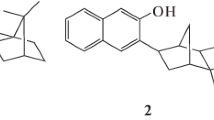Abstract
The free radical scavenging abilities of the structurally related steroids beta-sitosterol, beta-sitosterol glucoside (plant sterols and sterolins), cholesterol, and dehydroepiandrosterone sulphate (DHEAS) were compared with melatonin (an efficient free radical scavenger) in an in vitro system which measures lipid peroxidation of platelet membranes in the presence of iron (Fe2+). Lipid peroxidation is a process whereby cellular membranes are damaged due to the oxidative deterioration of polyunsaturated lipids, which may lead to cell death and disease in living organisms. Substances such as vitamin E protect cellular membranes against oxidative damage due to their chemical structures. The steroids cholesterol, beta-sitosterol, beta-sitosterol glucoside and dehydroepiandrosterone (DHEA) are structurally related to each other. During aging, serum concentrations of DHEA, DHEAS and melatonin decrease, while the concentration of cholesterol tends to increase. The aim of the present study was to compare the role these substances play in lipid peroxidation over a wide concentration range. At concentrations lower than the free iron in the reaction mixture, all the steroids investigated decreased lipid peroxidation. At higher concentrations, cholesterol and beta-sitosterol increased lipid peroxidation, while DHEAS and melatonin continued to decrease lipid peroxidation.
Similar content being viewed by others
REFERENCES
Aragno, M., Tamagno, E., Poli, G., Boccuzzi, G., Brignardello, E., and Danni, O. (1994). Prevention of carbon tetrachloride-induced lipid peroxidation in liver microsomes from dehydroepiandrosterone-pretreated rats. Free Rad. Res. 21:427-435.
Babior, B.M. (1984). Oxidants from phagocytes: Agents of defense and destruction. Blood 64:959-966.
Bouic, P.J.D. (1997). Immunomodulation in HIV/AIDS: The Tygerberg/Stellenbosch University experience. AIDS Bulletin 6:18-20.
Daniels, W.M.U., van Rensburg, S.J., Van Zyl, J., Van der Walt, B.J., and Taljaard, J.J.F. (1996). Melatonin and serotonin as free radical scavengers-possible mechanism. NeuroReport 7:1593-1596.
Fraser, D.R. (1985). Trace elements and vitamins in membrane function. Proceedings of the Nutrition Society 44:173-179.
Halliwell, B., and Gutteridge J.M.C. (1984). Oxygen toxicity, oxygen radicals, transition metals and disease. Biochem. J. 219:1-4.
Halliwell, B., and Gutteridge J.M.C. (1989). Free Radicals in Biology and Medicine. Clarendon Press, Oxford.
Hornsby, P.J. (1995). Biosynthesis of DHEAS by the human adrenal cortex and its age-related decline. Proc. N.Y. Acad. Sci. 774:29-46.
Hughes C., Mathews, B., Lenz, M.L. and Guyton, L.R. (1994). Cytotoxicity of oxidised LDL to porcine aortic smooth muscle cells is associated with the oxysterols 7-ketocholesterol and 7-hydroxycholesterol. Arterioscler. Thromb. 14:1177-1185.
Limson, J., Nyokong, T., and Daya, S. (1998). The interaction of melatonin and its precursors with aluminium, cadmium, copper, iron, lead, and zinc: An adsorptive voltammetric study. J. Pineal Res. 24:15-21.
Loria, R.M., Inge, T.H., Cook, S.S., Szakal, A.K., and Regelson, W. (1988). Protection against acute lethal viral infections with the native steroid dehydroepiandrosterone (DHEA). Journal of Medical Virology 26:301-314.
Pegel K.H. (1997). The importance of sitosterol and sitosterolin in human and animal nutrition. South African Journal of Science 93:263-268.
Reiter, R.J., Tan D.X., Poeggeler, B., Menendez-Pelaez, A., Chen, L.D., and Saarela, S. (1994). Melatonin as a free radical scavenger: implications for aging and age-related diseases. Ann. N.Y. Acad. Sci., 719:1-12.
Robertson, R.N. 1983. The Lively Membranes. Cambridge University Press, Cambridge.
Rom, W.N., and Harkin, T. (1991). Dehydroepiandrosterone inhibits the spontaneous release of superoxide radical by alveolar macrophages in vitro in asbestosis. Environmental Research 55:145-156.
Sohal, R.S., Ku, H.H., and Agrawal, S. (1993). Biochemical correlates of longevity in two closely related rodent species. Biochemical and Biophysical Research Communications 196:7-11.
Shinitzky, M. (1987). Patterns of lipid changes in membranes of the aged brain. Gerontology 33:149-154.
van Rensburg, S.J., Daniels, W.M.U., Van Zyl, J.M., Potocnik, F.C.V., Van der Walt, B.J., and Taljaard, J.J.F. (1994). Lipid peroxidation and platelet membrane fluidity-implications for Alzheimer's disease? NeuroReport 5:2221-2224.
van Rensburg, S.J., and Potocnik, F.C.V. 1998. The Free Radical Theory of Aging. Southern African Journal of Gerontology 7:35-36.
Author information
Authors and Affiliations
Rights and permissions
About this article
Cite this article
van Rensburg, S., Daniels, W., van Zyl, J. et al. A Comparative Study of the Effects of Cholesterol, Beta-Sitosterol, Beta-Sitosterol Glucoside, Dehydro-epiandrosterone Sulphate and Melatonin on In Vitro Lipid Peroxidation. Metab Brain Dis 15, 257–265 (2000). https://doi.org/10.1023/A:1011167023695
Issue Date:
DOI: https://doi.org/10.1023/A:1011167023695




